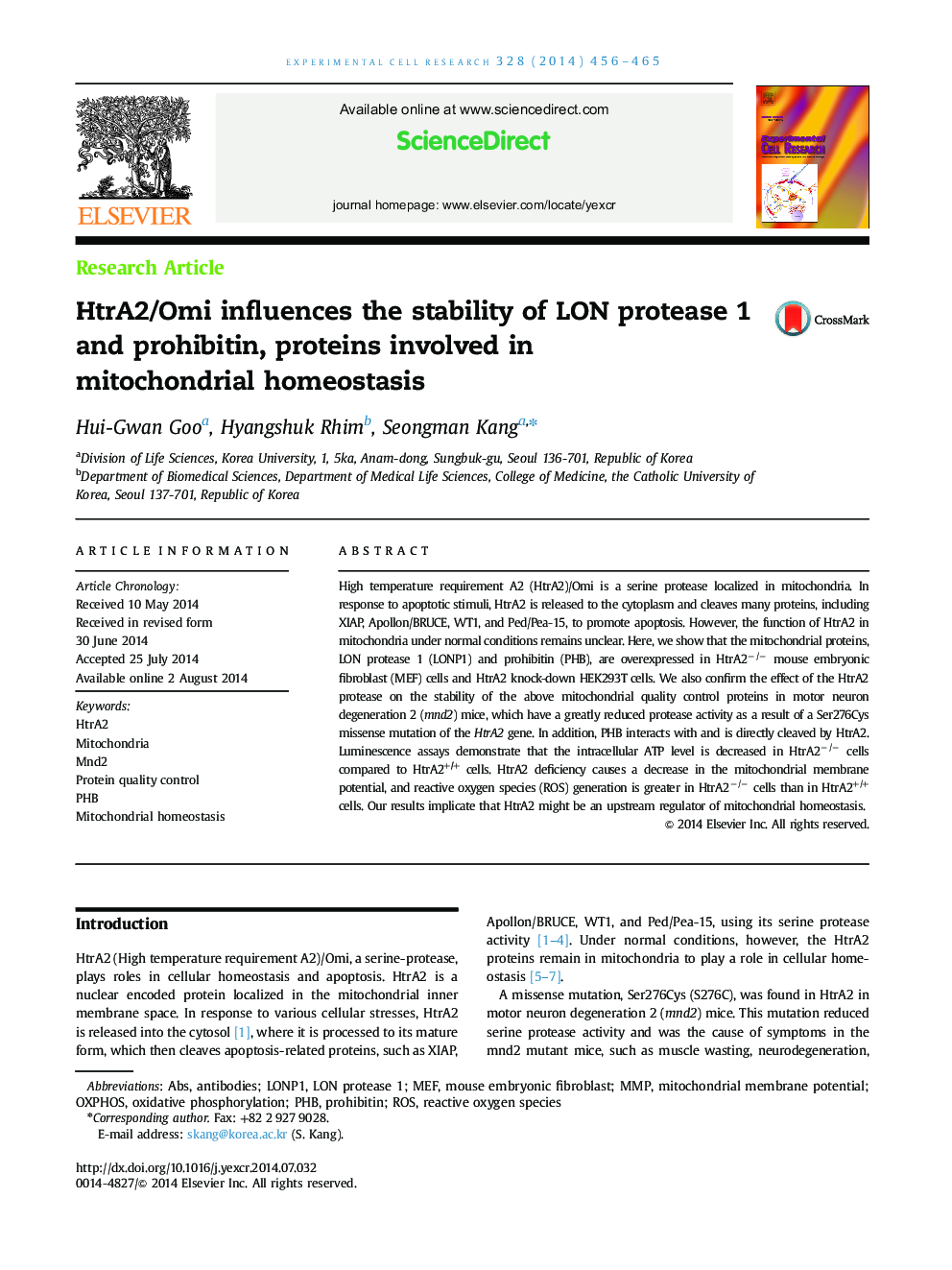| کد مقاله | کد نشریه | سال انتشار | مقاله انگلیسی | نسخه تمام متن |
|---|---|---|---|---|
| 2130279 | 1086548 | 2014 | 10 صفحه PDF | دانلود رایگان |

• HtrA2 influences the stability of LONP1 and PHB proteins.
• PHB interacts with and is directly cleaved by HtrA2.
• HtrA2 deficiency affects ROS generation, ATP production, and MMP.
• HtrA2 might be an upstream regulator of mitochondrial homeostasis.
High temperature requirement A2 (HtrA2)/Omi is a serine protease localized in mitochondria. In response to apoptotic stimuli, HtrA2 is released to the cytoplasm and cleaves many proteins, including XIAP, Apollon/BRUCE, WT1, and Ped/Pea-15, to promote apoptosis. However, the function of HtrA2 in mitochondria under normal conditions remains unclear. Here, we show that the mitochondrial proteins, LON protease 1 (LONP1) and prohibitin (PHB), are overexpressed in HtrA2−/− mouse embryonic fibroblast (MEF) cells and HtrA2 knock-down HEK293T cells. We also confirm the effect of the HtrA2 protease on the stability of the above mitochondrial quality control proteins in motor neuron degeneration 2 (mnd2) mice, which have a greatly reduced protease activity as a result of a Ser276Cys missense mutation of the HtrA2 gene. In addition, PHB interacts with and is directly cleaved by HtrA2. Luminescence assays demonstrate that the intracellular ATP level is decreased in HtrA2−/− cells compared to HtrA2+/+ cells. HtrA2 deficiency causes a decrease in the mitochondrial membrane potential, and reactive oxygen species (ROS) generation is greater in HtrA2−/− cells than in HtrA2+/+ cells. Our results implicate that HtrA2 might be an upstream regulator of mitochondrial homeostasis.
Journal: Experimental Cell Research - Volume 328, Issue 2, 1 November 2014, Pages 456–465